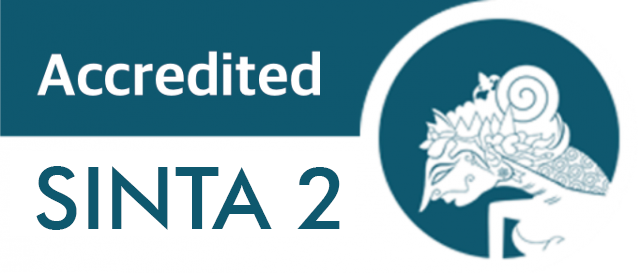English Teachers’ Teaching Quality in Madrasah in Jakarta and Banten based on the Dynamic Model of Educational Effectiveness
DOI:
https://doi.org/10.15408/tjems.v2i1.1668Keywords:
teacher effectiveness, teaching quality, teaching improvement, teacher professional development, efektifitas guru, kualitas pengajaran, peningkatan pengajaran, pengembangan profesional guruAbstract
Abstract
This paper was intended to describe English teachers’ teaching quality in teaching reading comprehension and provide some reflection and suggestion on how teaching quality could be improved. The classroom factors of the dynamic model (orientation, structuring, questioning, modeling, application, assessment, time management, and making classroom as a learning environment [CLE]) were used as a reference to conceptualize teaching quality. Classroom observation instrument was used to measure teaching quality of 59 English teachers in Madrasah Tsanawiyah in the provinces of Jakarta and Banten with a focus on reading comprehension. The findings showed that among the above eight factors, teachers rarely practiced orientation, structuring, modeling, and CLE. In addition, they did not provide enough application whereas a lot of time was spent for reading aloud and translating the text. Nevertheless, they started to raise questions and conduct assessment. With respect to questioning, however, the questions were limited to product questions, which did not promote critical thinking. Finally, the assessment method used was limited to questioning.
Abstrak
Tulisan ini bertujuan untuk menjelaskan kualitas guru Bahasa Inggris dalam mengajar reading comprehension dan memberikan rekomendasi strategi meningkatkan kualitas mengajar. Delapan aspek yang ada dalam the Ddynamic Model (orientation, structuring, questioning, modeling, application, assessment, time management, and making classroom as a learning environment [CLE]) dijadikan sebagai pijakan untuk mendefinisikan konsep kualitas mengajar. Penelitian ini menggunakan instrumen observasi kelas untuk melihat bagaimana guru mengajar reading comprehension. Partisipan penelitian ini adalah 59 guru Bahasa Inggris di Madrasah Tsanawiyah di propinsi DKI Jakarta dan Banten. Temuan penelitian ini menunjukkan bahwa di antara delapan aspek kualitas mengajar yang dalam the Dynamic Model, kebanyakan guru jarang sekali mempraktikkan orientation, structuring, modeling, dan CLE. Selain itu, mereka tidak banyak memberikan application dan waktu yang ada banyak terpakai untuk membaca teks dan menerjemahkannya. Meski demikian, guru-guru tersebut mulai menggunakan berbagai pertanyaan untuk memandu proses pembelajaran dan melakukan asesmen. Hanya saja, pertanyaan yang diajukan masih terbatas pada pertanyaan product yang tidak menumbuhkan daya kritis, dan metode assessmen yang dilakukan terbatas pada memberikan pertanyaan kepada siswa.
How to Cite: Azkiyah, S., N. (2015). English Teachers’ Teaching Quality in Madrasah in Jakarta and Banten Based on the Dynamic Model of Educational Effectiveness. TARBIYA: Journal Of Education In Muslim Society, 2(1), 35-46. doi:10.15408/tjems.v2i.1668.
Permalink/DOI: http://dx.doi.org/10.15408/tjems.v2i1.1668
References
Creemers, B.P.M. (1994). The effective classroom. London: Cassell.
Creemers, B. & Kyriakides, L. (2008). The Dynamics of Educational Effectiveness.A contribution to Policy, Practice and Theory in Contemporary schools. New York & London: Routledge Taylor & Francis Group.
Darling-Hammond, L. (1997). Doing what matters most: investing in quality teaching. New York: National Commission on Teaching & America’s Future.
De Jong, R., Westerhof, K.J., & Kruiter, J.H. (2004). Empirical evidence of a comprehensive model of school effectiveness: A multilevel study in mathematics in the 1st year of junior general education in the Netherlands. School Effectiveness and School Improvement, 15(1), 3-31.
Doolaard, S. (1999). Schools in change or schools in chain? the development of educational effectiveness in a longitudinal perspective. Enschede: Twente University Press.
Fullan, M. (2001). The new meaning of educational change. London: Routledge Falmer.
Harris, A. (2002). School improvement: what’s in it for school? London: Falmer Press.
Harris, A. & Muijs, D. (2005). Improving schools through teacher leadership. London: Open University Press.
Kyriakides, L. (2005). Extending the comprehensive model of educational effectiveness by an empirical investigation. School Effectiveness and School Improvement, 16 (2), 103-152.
Kyriakides, L., Campbell, R.J., & Gagatsis, A. (2000). The significant of the classroom effect in primary school: An application of Creemers comprehensive model of educational effectiveness. School Effectiveness and School Improvement, 11(4), 501-529.
Luyten, J.W. & Snijders, T.A.B. (1996). School effects and teacher effects in Dutch elementary education. Educational Research and Evaluation, 2, 1-24.
Marzano, R.J. (2007). The art and science of teaching. Alexandria, VA: Association for Supervision and Curriculum Development.
Muijs, D. & Reynolds, D. (2000). School effectiveness and teacher effectiveness in Mathematics: Some preliminary findings from the evaluation of the Mathematics Enhancement Program (Primary). School Effectiveness and School Improvement, 11 (3), 273 – 303.
Muijs, D. & Reynolds, D. (2010). Effective teaching: Research and practice. London: Paul Chapman.
Muijs, D. & Reynolds, D. (3rd ed) (2011). Effective teaching: Evidence and practice. London: SAGE.
Organisation for Economic Co-operation and Development (OECD). (1995). Performance standards in education: in search of quality. Paris: OECD.
Pilot, Albert. (2007). The Teacher as a Crucial Factor in Curriculum Innovation: the case of Utrecht University. Paper presented at the Conference “Teaching and Learning according and after Bologna”, at the Swiss Federal Institute of Technology (ETH, Zurich, Switzerland, 2007, March 9-10).
Teddlie, C. & Reynolds, D. (2000). The international handbook of school effectiveness research. London: Falmer Press.
Van der Werf, M.P.C., Creemers, B.P.M., De Jong, R., & Klaver, L. (2000). Evaluation of school improvement through an educational effectiveness model: The case of Indonesia’s PEQIP project. Comparative Education Review, 44 (3), p. 329–356.











